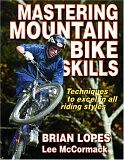Compact crankset vs mountain cassette for road bike
As is customary for this BLOG below is an over-analyzed thought process on gearing for road bikes. I'm the quintessential princess as in princess and the pea. The tiniest issues bug me. So much of this can be ignored for those of you that probably won't be bothered by half these issues.
Problem:
Around here we have some pretty decent steep hills. We also have some rolling terrain as well. I've been using a standard crankset 39/53 paired with a 12-27 9 speed road cassette ok.
However it can get difficult sometimes to find the sweet gear on the steeper or longer climbs. To me, the sweet gear is the biggest one that I can spin. Spin is an ambiguous term that means different things to different people. For me it means a comfortable cadence but also some resistance push against. The 39/27 is still just a hair to high in some situations.
I've often thought that it's just good training to struggle on steeper hills. But there just seems to be a certain point where not having the right gear just works against me and I go slower.
The other problem is this. I did this thing in its first two years and it was not pretty. My wife has been doing it for the past two years and has convinced me to do it again. I'm well beyond that stage of doing something super difficult and go through agony upon agony in order to complete it. I am NOT going to do this thing again without some serious climbing gearing combined with some serious riding.
There are several options available for combating these problems:
1) Use a mountain bike cassette with a bigger big cog. Such as an 11-32.
2) Get a triple
3) Use a compact crankset
Issues with these options
1) A mountain bike cassette actually works pretty well. There are some potential issues about running too big a cassette with a short cage road rear derailleur. Using a longer cage rear derailleur solves this if you're worried about damage to the rear derailleur (as in explosion if you mistakenly get into the big/big combo)
The bigger problem with a wide range cassette to me is the larger steps between cogs as compared to a road cassette.
I like to shift a lot to suit the changing terrain. Big steps between cogs can cause too much change in gearing for princesses. This is one reason why I liked the change to 9speed in mountain bikes (even though the can have more technical issues than 8speed)
An 11-32 cassette has larger gaps between some of the cogs than a 12-27.
2)Issues with triples
-I've never used a triple on a road bike, but I think it's a safe thing to say that each shift on the front can be an opportunity for problems. So the less the better.
-triples have a stigma.
-triples are heavier than a double. Weight weenies understand.
3)Compacts:
-may require a special compact front derailleur. Most front derailleurs have a capacity (Big ring teeth-small ring teeth) of 15t. So a typical 53/39 has needs a front derailleur with a capacity greater than 14t. But a compact crankset like a 50/34 needs a capacity of 16t.
-higher chance of dropping the chain when going from the big to the small when you have a big jump like from a 50-->34
-When you shift from the big ring to the little you need more shifts in the rear so you don't all of a sudden spin out, as compared to if you went from a 53 to a 39.
-You lose some of your top end by going to a big ring with less teeth.
I've decided to go with a Compact crankset, but with a 36t small ring. This will ideally let me use my current front derailleur. And the jump from the big to the small won't be as drastic, hopefully reducing the risk of dropping a chain and reducing the # of gears I need to grab in the back when dropping from the big chainring to the small.
I am also hoping that the 50t big ring will allow me to stay in my big ring longer and be able to run it up and over some grunt rollers that may have required me to downshift to the small ring (especially when fatigued)
I'll stick with my 12-27 cassette in the back to give me a very nice 36/27 climbing gear for the steep hills. The big downside is the change to a 50/12 for my biggest gear. I think I'll be loving the 36/27 more than I'll be missing the 53/12.
The best value, imho is the Ritchey Pro compact crankset

Under $80 ebay. Only 10-20 grams heavier than the more expensive WCS. Tested to have some very good stiffness at this review.
There are some cheaper ones out there that take an ISIS BB. This one takes an Octalink BB.
 . Octalinks have a much better reputation than ISIS does. Note *Ultegra Octalinks have a better rep than Durace ones**
. Octalinks have a much better reputation than ISIS does. Note *Ultegra Octalinks have a better rep than Durace ones**Ultegra Octalinks are are obsolete according to Shimano. But they are plentiful and relatively cheap.
The rage these days is the External style Bottom brackets. Some say the additional stiffness is noticeable. At my weight/power I don't think I could tell. There is also the speculation of increased stiction from the larger seals/bearings on the external crankset. And the speculation of a change in Q factor.
All speculations of course.
So under a $100 (provided I don't need a special compact front der.) Which hopefully I can put a dent in by selling my current crankset. Not bad considering that a lot of cranksets go for $300+. Of course, I won't sell my other one until I figure out if this works, which I'm sure you'll hear about here.
Didn't I say that I wasn't goint to obesses over crap again and was just going to put my energy into training? Just can't help it. It's part of my personality that you all love, my wife especially.



9 Comments:
I notice some guys have gone to mtb cassette at the back with a mtb derailleur like xtr. The route I decided to go is the shimano R700 crank (there are cheaper versions as well). Good thing with the shimano crank is that is designed to shift well with the standard 53/39 front derailleur. It should work well with a 12/25 or the 12/27 you are running.
Alan
I notice some guys have gone to mtb cassette at the back with a mtb derailleur like xtr. The route I decided to go is the shimano R700 crank (there are cheaper versions as well). Good thing with the shimano crank is that is designed to shift well with the standard 53/39 front derailleur. It should work well with a 12/25 or the 12/27 you are running.
Alan
Someone makes an 11-28 road cassette in an effort to be the ultimate mate to a compact crank. I was tempted since I live in CO and don't want to go triple.
Mike B
I run a compact FSA crank (stock 50-34)on my Campy equipped roadie. For the mostly flat to rolling home town area, I run a 38T ring instead of the 34T. I also have a 11-23 cassette. According to gear charts, 50-11 is actually a tad taller than 53-12. When I go for a super climbing ride I pu the 34 on and run a 13-26 cassette. The 34-26 is about equal to a 38-30 or so.
Check out the gear chart at;
http://www.analyticcycling.com/GearChart_Page.html
Lots of other cool stuff there too!
xray_ed (from mtbr)
for once i`m happy to be a flatlander...........
I currently run a 50x34 crank with a 12-27 in back. I can climb most things but longer rides in the mountains eventually give me problems. I want to do Mt Mitchell this year but am worried about my set up not being enough for my probable lack of peak fitness in June. I run 10 speed so using a mtn cassette will not work, so I've been told. I really don't want to switch to a triple set up. Any suggestions? Steve
I have a compact Shimano 50/34 crank with a 12/27 in the rear. Ten speed. The set up is more than adequate to climb everthing but Mt. Washington, NH. Any advice for rear cassette?
AWD
I wonder if anyone has an answer to the Mt. Washington cassette question.
AWD
The chap is completely right, and there's no skepticism.
Post a Comment
<< Home